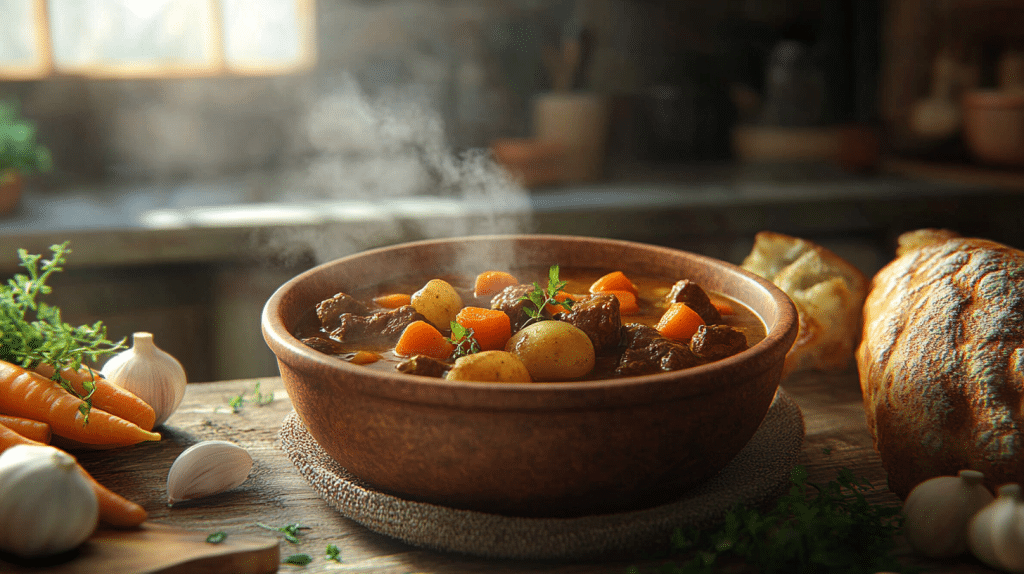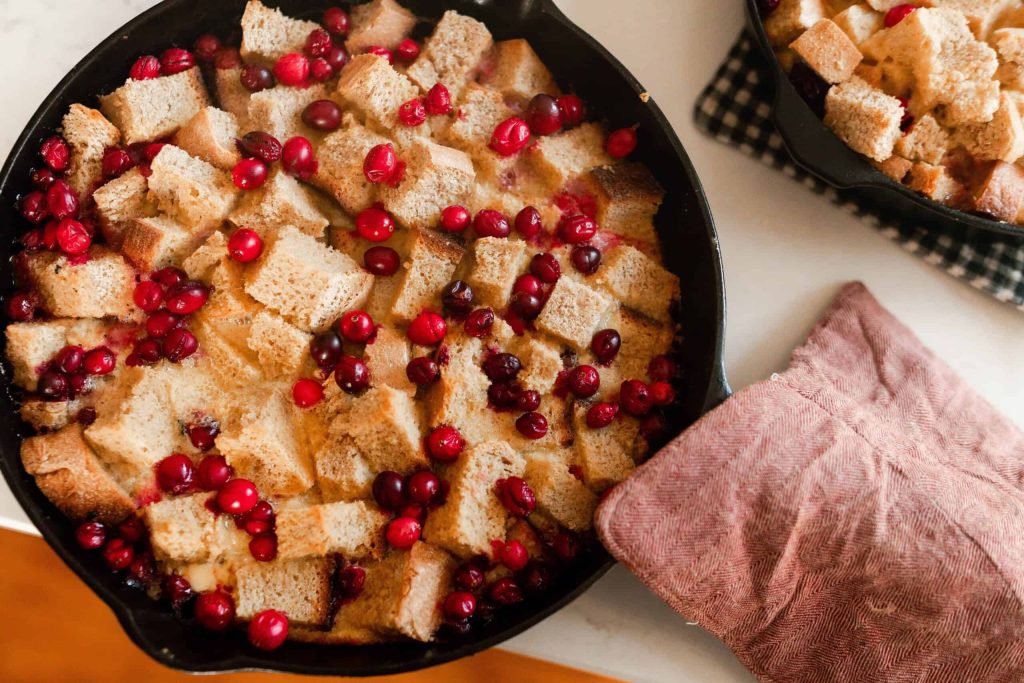When cold days hit, nothing satisfies like a hot bowl of beef stew.
Many home cooks find it hard to make a truly flavorful stew that brings comfort with each spoonful.
The right mix of flavors often feels just out of reach.
This Beef Stew recipe solves that problem completely. It creates rich, deep flavors that warm you from the inside out, using simple methods that anyone can follow in their own kitchen.
In this Blog, we’ll walk through the step-by-step process to make this classic comfort food, show the key tips for tender meat, and explain how to build those satisfying layers of taste that make this stew so special.
What Makes Bunker Hill Beef Stew Unique?
Bunker Hill Beef Stew stands out from other stew recipes for several clear reasons.
This hearty dish has a special place in comfort food history, with roots that go back many generations. The mix of spices and cooking methods sets it apart from regular beef stews you might try elsewhere.
What truly makes this stew special:
- Family history – Passed down through generations, with each family adding their own small tweaks to the basic recipe
- Slow cooking method – The meat simmers for hours, which breaks down tough fibers and creates that melt-in-your-mouth feeling
- Rich broth base – Made with both beef stock and red wine, giving it a deeper flavor than most standard stews.
- Local ingredients – Originally made with vegetables grown in the area, keeping true to its roots
- Perfect balance – The mix of savory, slight sweetness, and hint of herbs creates a flavor that feels both fresh and familiar
The long, slow cooking process allows all the flavors to blend perfectly.
Each spoonful offers a taste of home, making this stew more than just food—it’s a true comfort experience that warms both body and spirit.
What Are the Best Cuts of Meat for Beef Stew?
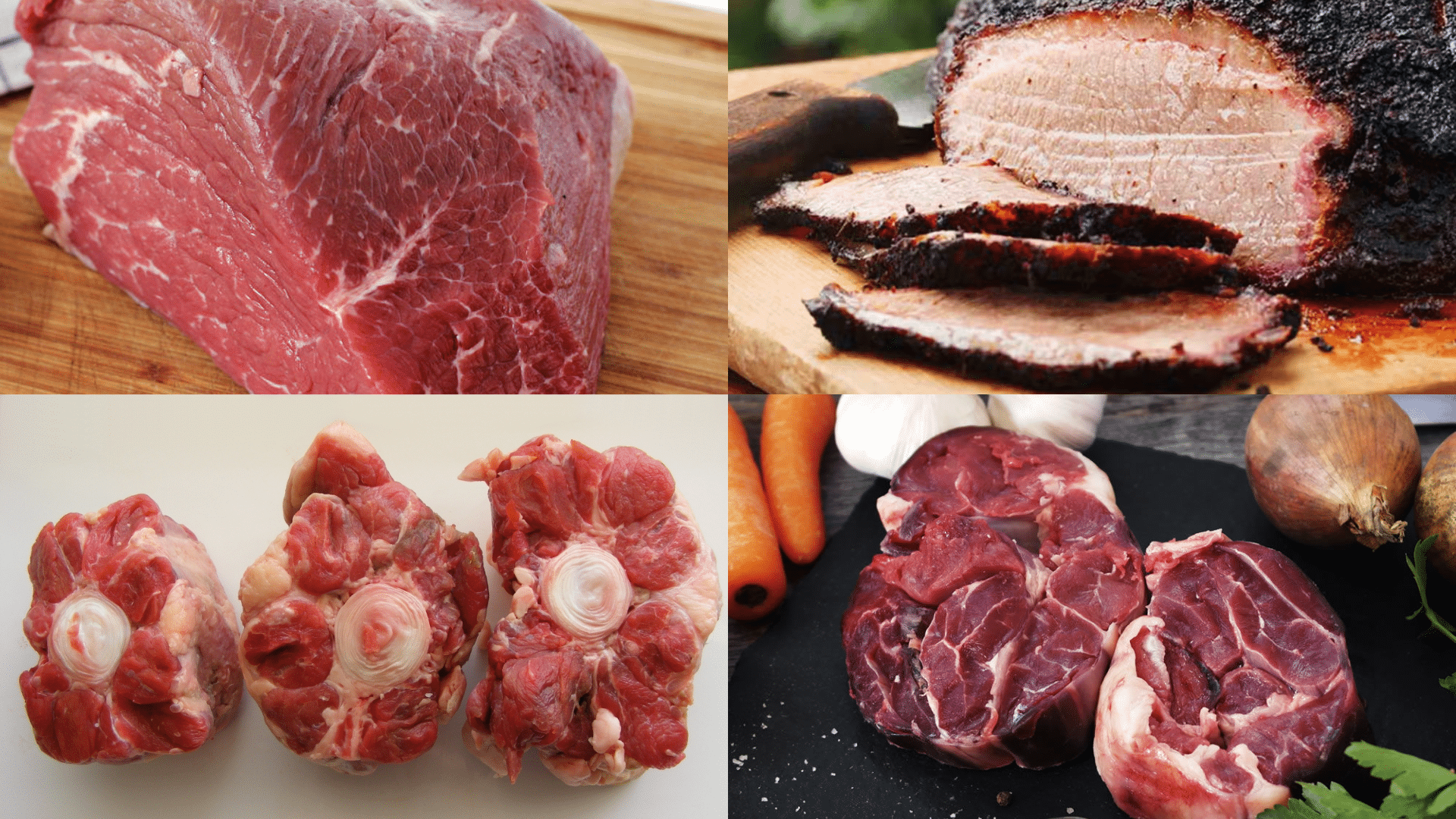
The right cut of meat makes all the difference in creating a perfect beef stew.
Here are the top choices for Bunker Hill Beef Stew:
- Chuck roast – The most popular choice for beef stew. It has good marbling, becomes very tender when cooked slowly, and adds rich flavor to the broth.
- Bottom round – Less fat than chuck but still gets tender with long cooking. It’s a good option if you want leaner meat in your stew.
- Brisket – Full of flavor and breaks down beautifully during slow cooking. The flat cut works best for stew as it’s more uniform.
- Boneless short ribs – These offer amazing flavor and tenderness. They cost more than other cuts but give your stew a special quality.
- Beef shin – Also called beef shank, this cut has a lot of connective tissue that melts into the stew, making the broth rich and thick.
- Oxtail – Though not as common, oxtail creates an incredibly rich stew with a deep taste that many stew lovers seek out.
- Stew meat packages – Pre-cut options from butchers often contain a mix of cuts. They work fine but may cook less evenly than single-cut choices.
Step-by-Step Guide to Delicious Beef Stew
There’s nothing like a warm, rich beef stew to bring comfort to your table.
This slow-cooked classic is packed with tender meat, hearty vegetables, and deep flavors that only get better with time.
Follow these simple steps to create a meal that feels like a hug in a bowl!
Step 1: Tools and Materials Required
| Tools | Materials |
|---|---|
| Sharp knife | Chuck roast (2-3 lbs) |
| Cutting board | Salt and pepper |
| Large mixing bowl | Garlic powder, celery seed, black pepper |
| Wooden spoon | All-purpose flour |
| Measuring cups | Cooking oil (olive oil preferred) |
| Measuring spoons | Butter |
| Slow cooker | Onion (chopped) |
| Large skillet | Garlic (minced) |
| Garlic press | Carrots (chopped) |
| Ladle | Celery (chopped) |
| Slotted spoon | Tomato paste |
| Small bowl | Beef broth or water |
| Whisk | Red wine (optional) |
| Splash guard | Bay leaves |
| Timer | Fresh rosemary |
| Peeler | Frozen peas |
| Stove or cooktop | Cornstarch |
| Serving bowls | Cold water |
| Spoon | Butter (for finishing) |
Step 2: Prepare the Beef
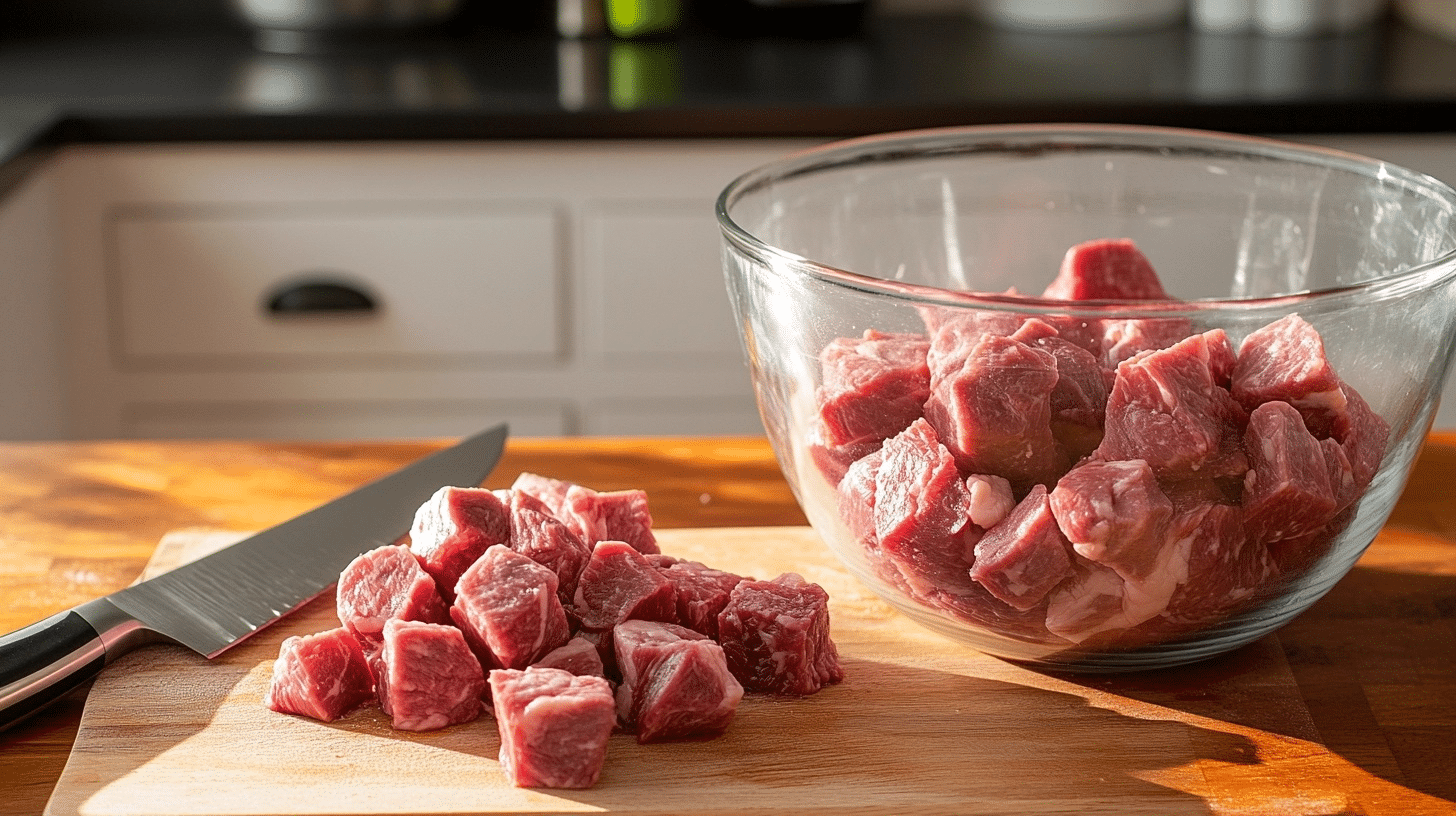
- Take the chuck roast and place it in the freezer for about 15 minutes. This firms up the meat, making it easier to cut.
- Using a sharp knife, trim excess fat and cut the beef into uniform one-inch cubes. This ensures even cooking.
- Transfer the beef cubes to a large mixing bowl.
Step 3: Season and Coat the Beef
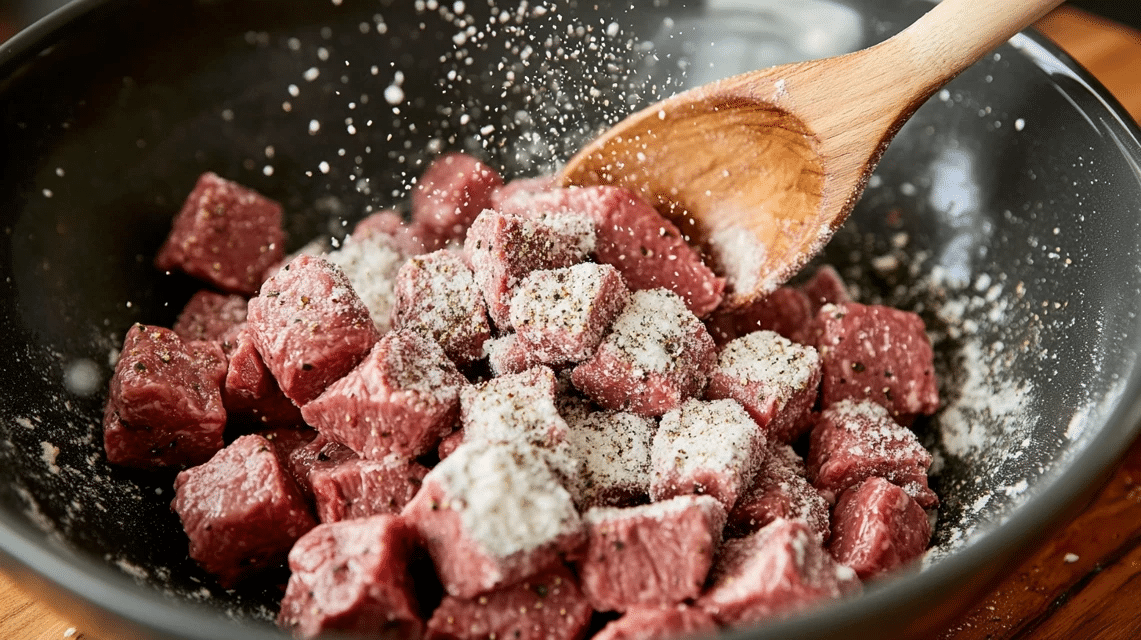
- Generously season the beef with salt, pepper, garlic powder, celery seed, and black pepper.
- Sprinkle flour evenly over the beef and toss everything together with a wooden spoon to coat each piece well. The flour helps with browning and thickening the stew later.
Step 4: Brown the Beef
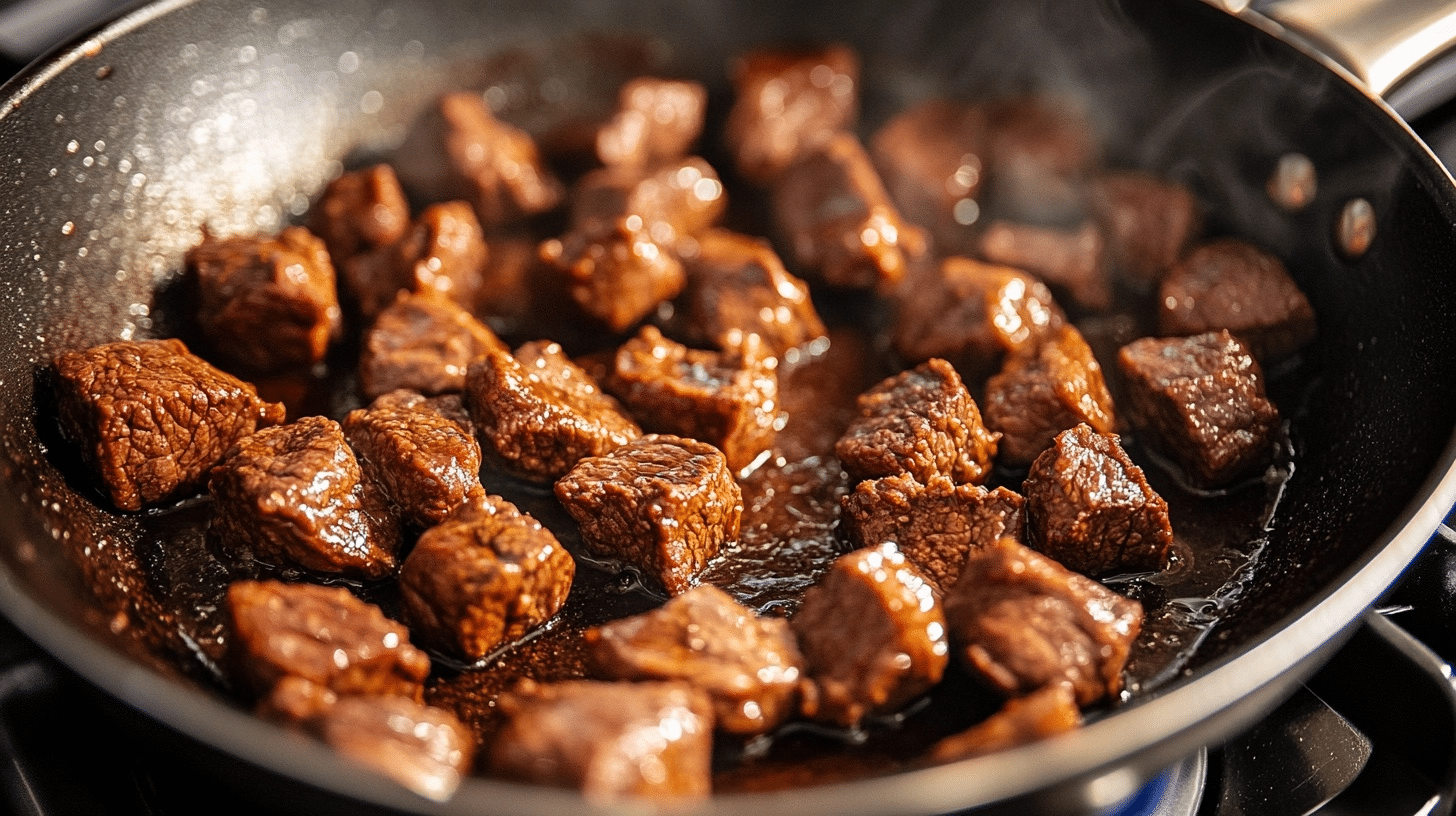
- Heat a large skillet over medium-high heat and add a couple of tablespoons of cooking oil.
- Once the oil is hot, add the beef in batches, ensuring the pieces are not overcrowded. Brown each side for about 2-3 minutes, then transfer the browned beef into the slow cooker.
- Repeat until all beef is browned. This step improves the flavor of the stew.
Step 5: Sauté the Aromatics
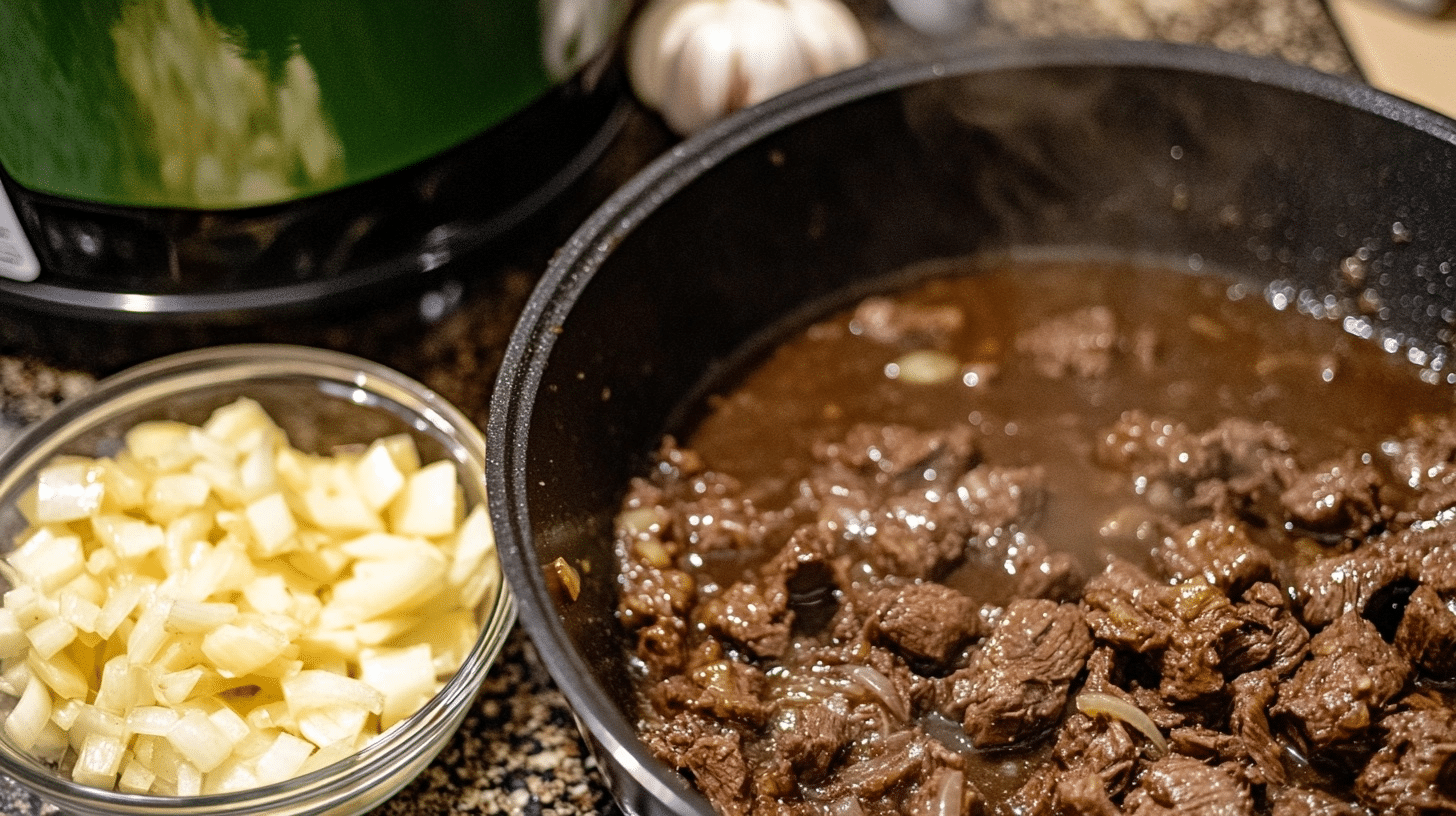
- In the same skillet, melt butter and add chopped onions. Sauté for about a minute until they begin to soften.
- Add minced garlic and stir for another 30-40 seconds until fragrant.
- Scrape up any browned bits from the pan and transfer the onion-garlic mixture into the slow cooker.
Step 6: Assemble the Stew
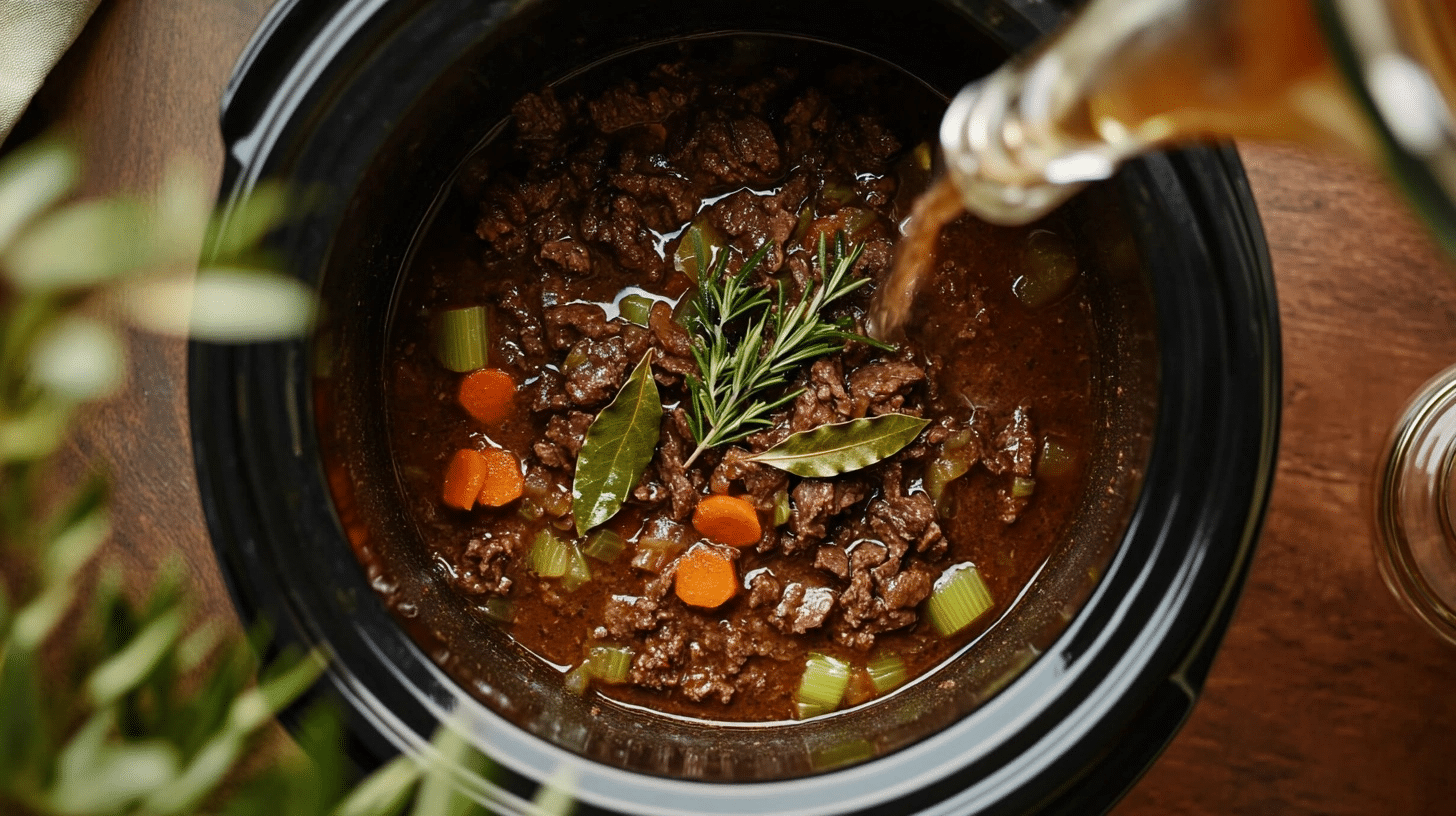
- Add chopped carrots, celery, tomato paste, beef broth (or water), and optional red wine into the slow cooker.
- Stir everything together, ensuring all ingredients are well mixed.
- Place bay leaves and fresh rosemary on top.
- Cover the slow cooker with a lid and cook on HIGH for 4 hours or LOW for 8 hours without removing the lid.
Step 7: Final Touches and Thickening
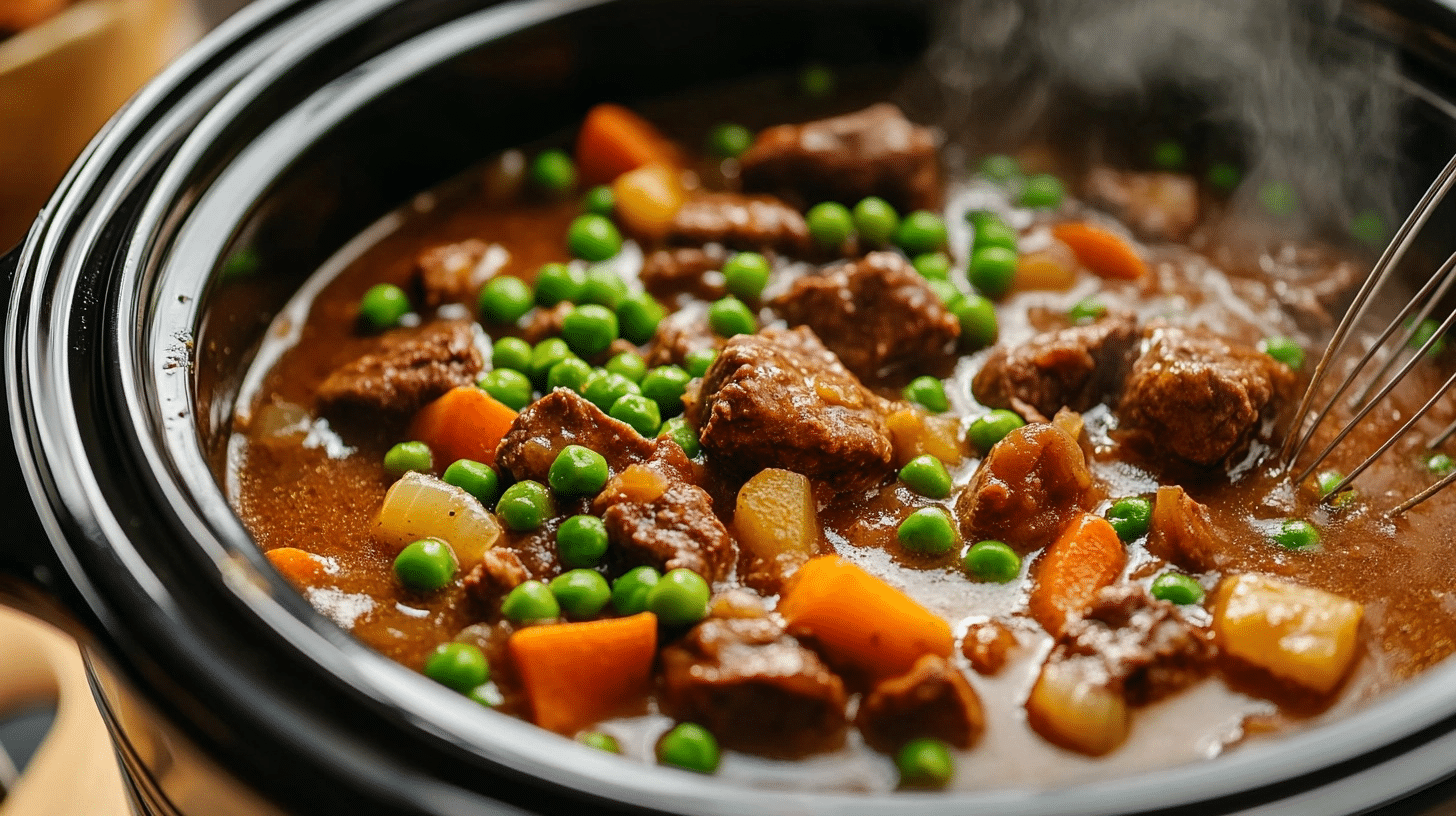
- After the cooking time is up, remove bay leaves and rosemary stems.
- Add frozen peas and let the stew cook for another 15 minutes.
- In a small bowl, whisk together cold water and cornstarch to create a slurry.
- Slowly pour the slurry into the slow cooker while stirring. Let it simmer until the stew thickens slightly.
- Add a final tablespoon of butter for a silky finish.
- Serve hot and enjoy!
For more details, refer to the YouTube video below:
How Can I Make Bunker Hill Beef Stew Healthier?
Making a healthier version of Bunker Hill Beef Stew is simple without losing its comfort food status.
Start by trimming visible fat from the meat before cooking to cut calories. You can also use leaner cuts like bottom round.
Boost the vegetable content by adding extra carrots, celery, and other colorful veggies like bell peppers or zucchini.
Cut back on salt by using low-sodium beef broth and herbs for flavor instead. Replace white potatoes with sweet potatoes or turnips for more nutrients and fiber.
If the recipe calls for flour to thicken the stew, try using arrowroot powder or cornstarch instead for a lighter result.
For the cooking method, try using a slow cooker, which needs less oil than traditional methods.
Skim off any fat that rises to the top before serving. These small changes keep all the taste while making the stew better for your health.
Delicious Sides to Serve with Bunker Hill Beef Stew
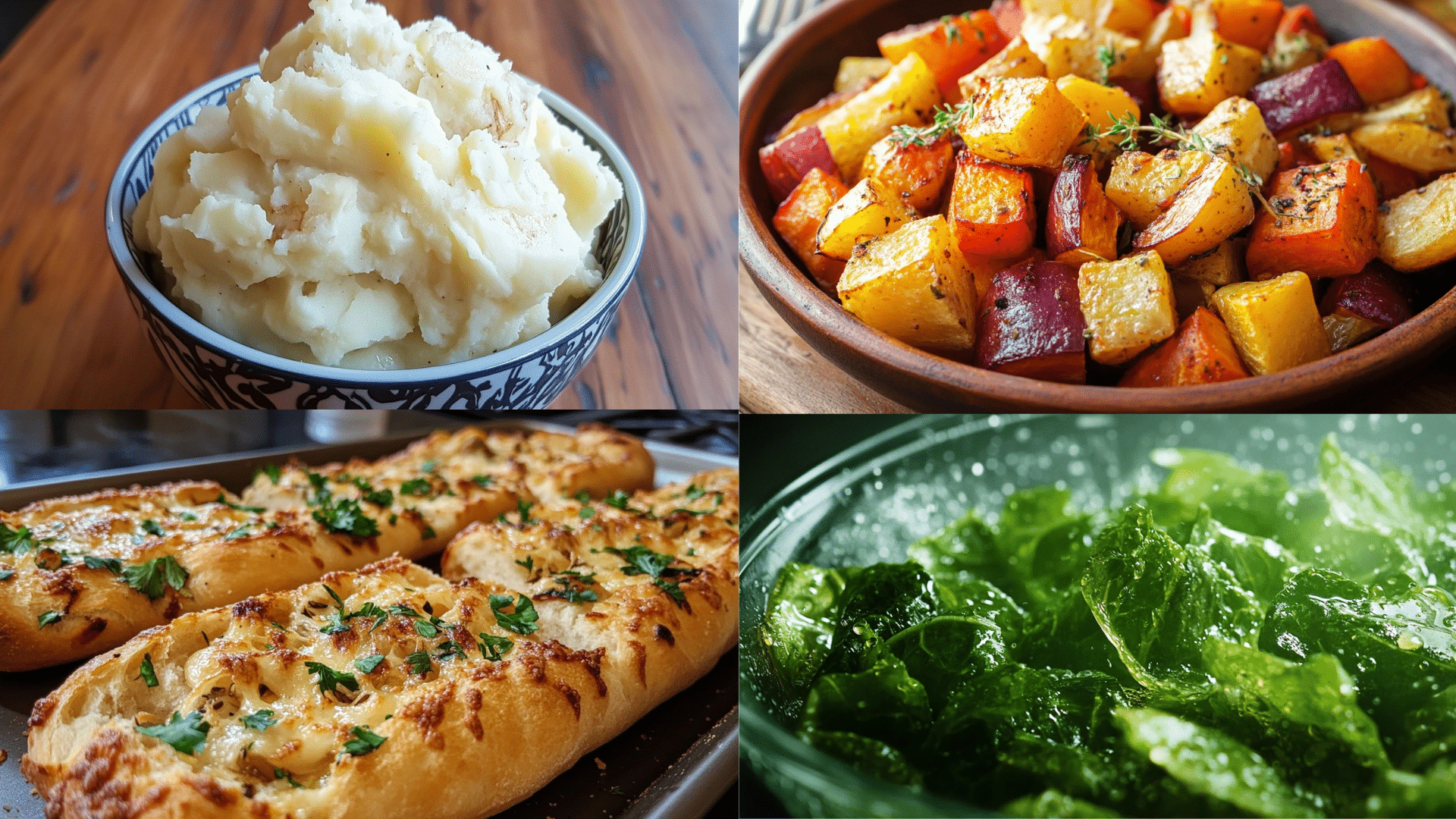
A great beef stew deserves great sides! The right pairings can make your meal complete.
Here are some perfect companions for Bunker Hill Beef Stew that will round out your comfort food experience:
- Crusty bread – A fresh loaf with a crunchy crust and soft inside works perfectly for soaking up the rich stew broth. French bread or sourdough are top picks.
- Buttery mashed potatoes – Create a smooth bed for your stew to rest on. The creamy texture contrasts nicely with the chunky stew.
- Simple green salad – A light salad with a tangy dressing cuts through the richness of the stew and adds fresh crunch to your meal.
- Roasted root vegetables – Carrots, parsnips, and turnips roasted with herbs complement the flavors in the stew without copying what’s already in it.
- Steamed rice – Plain white or brown rice soaks up the stew gravy and stretches your meal further.
- Warm biscuits – Soft, flaky biscuits served with butter make the meal feel more special.
- Garlic bread – The punch of garlic adds another flavor dimension that works well with the deep taste of beef stew.
- Cornbread – The slight sweetness pairs wonderfully with the savory stew and adds a different texture to your plate.
The Bottom Line
Making a great beef stew isn’t hard once you know the right techniques.
In this Blog, I showed you what makes Bunker Hill Beef Stew special, which cuts of meat work best, what sides pair perfectly with it, and how to make a healthier version without losing flavor.
Now it’s your turn to bring this classic comfort food to your table.
Remember to choose the right cut of meat, take your time cooking it, and pair it with sides that complement its rich flavors.
Have you tried making beef stew before? What’s your favorite side dish to serve with it?
Share your experiences in the comments below, or try this recipe and let me know how it turned out for your family!


